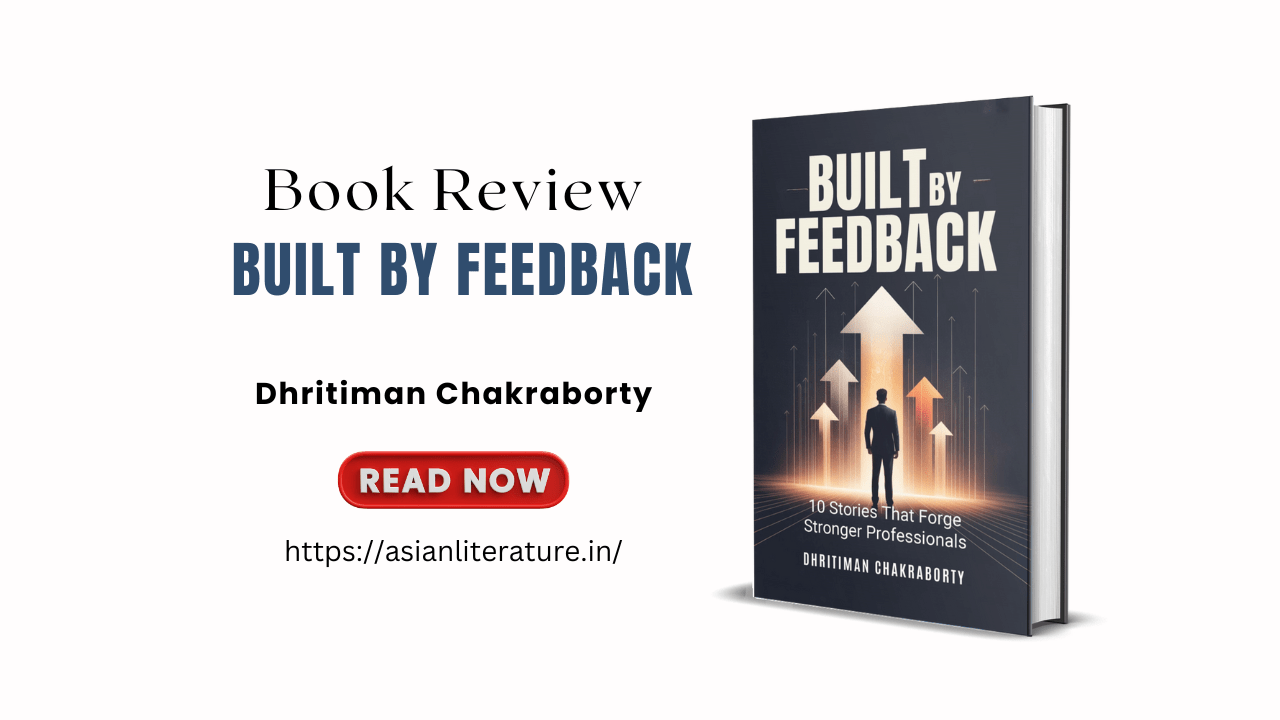
Built By Feedback
In Built by Feedback: 10 Stories That Forge Stronger Professionals, Dhritiman Chakraborty offers a rare blend of empathy and structure—a book that neither preaches corporate clichés nor reduces growth to jargon. Instead, it presents ten evocative stories drawn from real Indian workplaces, each centered on moments when feedback—sometimes harsh, sometimes humbling—becomes the turning point in a person’s life. Through these lived experiences, Chakraborty invites readers to reconsider what it truly means to learn, to fail, and to evolve.
At its core, Built by Feedback is a study of resilience born out of discomfort. The author begins with a powerful preface that sets the emotional tone: his own recollection of nights spent restless after blunt reviews, which, in hindsight, became the catalyst for his growth. This sense of personal honesty runs through the book like a quiet pulse. It transforms Built by Feedback from being a corporate manual into a companion for self-reflection.
The structure of the book is both disciplined and accessible. Each story is followed by a reflective framework called PUSH—Pressure, Uncomfortable Work, Support, Honest Feedback—designed to help readers decode their emotional and behavioral patterns when faced with criticism. Later, the GRAIN model—Gather, Reflect, Align, Implement, Navigate—expands on how one can translate discomfort into sustained development. These frameworks don’t feel like mechanical acronyms but organic outcomes of lived experiences. The models are simple enough to apply yet psychologically astute, reflecting Chakraborty’s deep understanding of human behavior in professional settings.
The stories themselves form the emotional backbone of the book. They span industries and life stages: from Dilip, the accountant in Jaipur who learns to conquer his fear of English-speaking, to Malathi, the veteran banker who reclaims her passion for music after burnout; from Rahul, the laid-off employee who finds his entrepreneurial courage, to Meera, who learns that leadership presence is not innate but cultivated. Each narrative reads like a corporate parable—anchored in realism, stripped of artifice, and threaded with introspection.
What stands out most is how Chakraborty captures the distinctly Indian workplace experience—where hierarchy, hesitation, and humility often coexist in uneasy balance. He writes with sensitivity about the unspoken struggles of non-English-speaking professionals, the emotional toll of burnout in middle-class stability, and the cultural reluctance to talk about failure. Few management books have managed to capture this landscape with such compassion. The prose is simple, direct, and deliberate—crafted to reach readers across language and professional barriers.
One of the book’s strengths lies in its psychological insight. Chakraborty doesn’t glorify suffering or romanticize struggle. Instead, he treats discomfort as a necessary teacher—something that reveals our blind spots and potential simultaneously. The stories illustrate that feedback, when received with reflection rather than resentment, can rewire not just careers but mindsets. For example, in “The Manager Who Didn’t Like Me Helped Me Most,” the protagonist learns that tough leadership often hides genuine mentorship. Such realizations, though subtle, form the book’s ethical core: growth begins not with praise but with pain understood and processed.
Stylistically, the writing is clean and unpretentious. The tone balances warmth and authority, making it equally readable for corporate professionals, students, and educators. The integration of real data points, case studies, and cross-references to Indian corporates like Infosys, Wipro, and TCS gives the book a grounding in research without losing its narrative fluidity. The occasional references to academic studies and psychological theories (such as “constructive abandonment” or “radical candor”) lend credibility, but Chakraborty never lets theory overshadow storytelling.
If there is a minor limitation, it lies in the book’s uniformity of tone. Every story ends on a hopeful, reflective note—a rhythm that, while inspiring, can at times feel predictable. A deeper exploration of moral ambiguity, workplace politics, or unresolved endings might have added greater complexity. Yet, this consistency is also what makes the book approachable for a wide audience—it’s written not to critique corporate systems, but to empower individuals navigating them.
Ultimately, Built by Feedback succeeds because it humanizes the professional journey. It speaks to everyone who has sat through a difficult appraisal, battled self-doubt, or wondered if they are “good enough.” In doing so, Chakraborty redefines feedback—not as a verdict on competence, but as an invitation to courage. His message is both timeless and timely: that personal growth begins not when we are praised, but when we choose to listen, adapt, and act in the face of uncomfortable truths.
In a world obsessed with instant validation and external success, Built by Feedback reminds us that the most transformative learning often begins with a single, unsettling sentence. It is a thoughtful, grounded, and deeply Indian contribution to the literature of professional development—one that transforms feedback from fear into fuel.
Book Title: Built By Feedback
Author: Dhritiman Chakraborty
Publisher: Evincepub Publihsing

